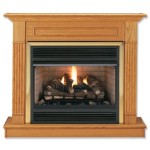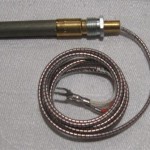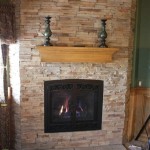Wood Stove Inserts For Fireplaces: Reviews and Key Considerations
Wood stove inserts offer a practical and efficient solution for homeowners seeking to enhance the heating capabilities of their existing fireplaces. These appliances transform traditional, often inefficient open fireplaces into powerful heat sources, reducing energy costs and increasing home comfort during colder months. Understanding the features, benefits, and considerations involved in selecting a wood stove insert is crucial for making an informed purchasing decision.
The market for wood stove inserts is diverse, with models available in a range of sizes, styles, and heating capacities. Reviews of specific models often highlight their ability to distribute heat evenly, their ease of use, and their safety features. However, a thorough evaluation requires examining key factors such as heating efficiency, emissions compliance, installation requirements, and overall value.
Heating Efficiency and BTU Output
One of the primary reasons homeowners opt for a wood stove insert is to improve the heating efficiency of their fireplace. Traditional open fireplaces lose a significant amount of heat up the chimney, often resulting in a net heat loss for the home. Wood stove inserts, on the other hand, are designed to capture and radiate heat into the room, significantly reducing heat loss and increasing the overall heating efficiency. Efficiency is typically measured as a percentage, with higher percentages indicating greater heat output relative to the amount of wood burned.
BTU (British Thermal Unit) output is another critical factor to consider. BTU rating indicates the amount of heat the insert can produce per hour. Selecting an insert with the appropriate BTU output for the size of the space to be heated is essential. An insert with too low a BTU rating will struggle to effectively heat the area, while an insert with an excessively high BTU rating may overheat the space. Factors like climate, insulation, and the layout of the home should be taken into account when determining the appropriate BTU requirement.
Many modern wood stove inserts feature advanced combustion technologies that further enhance heating efficiency. These technologies, such as secondary combustion chambers and catalytic combustors, help to burn off gases and particulates that would otherwise escape up the chimney. This results in cleaner emissions and greater heat output from the same amount of wood.
Emissions Compliance and Environmental Impact
Environmental concerns are a significant consideration when selecting a wood stove insert. The Environmental Protection Agency (EPA) regulates emissions from wood-burning appliances to reduce air pollution. EPA-certified wood stove inserts are designed to meet strict emissions standards, ensuring cleaner burning and reduced environmental impact. These inserts typically feature advanced combustion systems that minimize the release of harmful pollutants into the atmosphere.
When evaluating wood stove inserts, it is imperative to look for the EPA certification label. This label indicates that the appliance has been tested and meets the EPA's emission standards. The emission rate, measured in grams per hour, will be indicated on the label. Lower emission rates signify a cleaner-burning appliance. Choosing an EPA-certified insert not only benefits the environment but also ensures compliance with local regulations, as many jurisdictions require the use of EPA-certified wood-burning appliances.
Furthermore, the type of wood burned can significantly impact emissions. Using dry, seasoned wood is crucial for achieving optimal combustion and minimizing pollution. Wet or unseasoned wood produces more smoke and pollutants, reducing heating efficiency and increasing the risk of chimney fires. Proper storage and seasoning of firewood are essential for responsible wood burning.
Installation Requirements and Safety Considerations
Proper installation is critical for ensuring the safe and efficient operation of a wood stove insert. Installation typically involves inserting the stove into an existing fireplace opening and connecting it to a chimney liner. The chimney liner is essential for venting exhaust gases safely and preventing creosote buildup, which can lead to chimney fires.
It is highly recommended that a qualified professional install the wood stove insert. Professional installers have the expertise and experience to ensure that the installation meets all applicable building codes and safety standards. Improper installation can result in safety hazards, such as carbon monoxide leaks or chimney fires.
Safety considerations extend beyond the installation process. Regular maintenance, including chimney cleaning and inspection, is essential for preventing chimney fires and ensuring optimal performance. Creosote, a byproduct of wood combustion, can accumulate in the chimney liner and poses a significant fire risk. Regular cleaning by a qualified chimney sweep is necessary to remove creosote buildup and prevent fires. Other safety measures include installing carbon monoxide detectors in the home and ensuring proper ventilation to prevent the buildup of harmful gases.
The type of fuel used also plays a role in safety and efficiency. While most wood stove inserts are designed to burn natural wood, some models may also be compatible with manufactured logs or wood pellets. It is crucial to adhere to the manufacturer's recommendations regarding fuel type to ensure safe and efficient operation. Using inappropriate fuel can damage the insert and increase the risk of fire.
Ultimately, selecting a wood stove insert requires careful consideration of heating needs, environmental impact, and safety factors. Reviews of specific models can provide valuable insights into their performance and features. However, thorough research and professional consultation are essential for making the right choice and ensuring a safe and efficient heating solution.

Why A Wood Burning Fireplace Insert Bethesda Md Service

T25i Timberwolf Wood Fireplace Insert Hearth Stove Patio

Why A Wood Burning Fireplace Insert Bethesda Md Service

Lopi Premium Wood Fireplace Inserts Custom Hearth Fireplaces And Stoves

Best Wood Burning Fireplace Insert With Blower Forestry Reviews

Top 5 Reasons To Consider A Fireplace Inserts Wi Ia Il

Wood Burning Fireplace Inserts Insert Installation

Fireplace Insert Guide Fireplaces Direct Learning Center

Ventis Hei240 Wood Burning Insert Rockford Chimney

Fireplace Insert Vs Zero Clearance Maple Mtn








